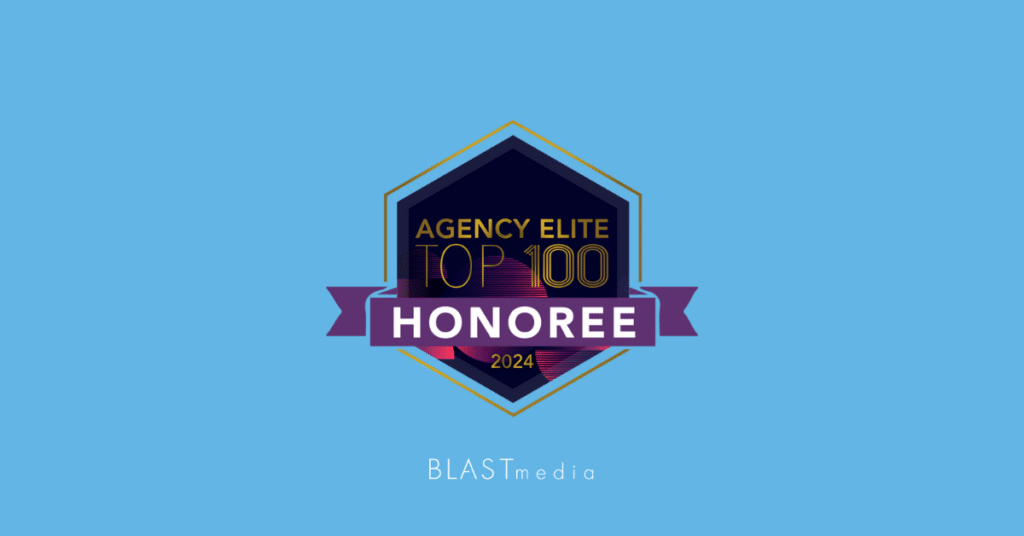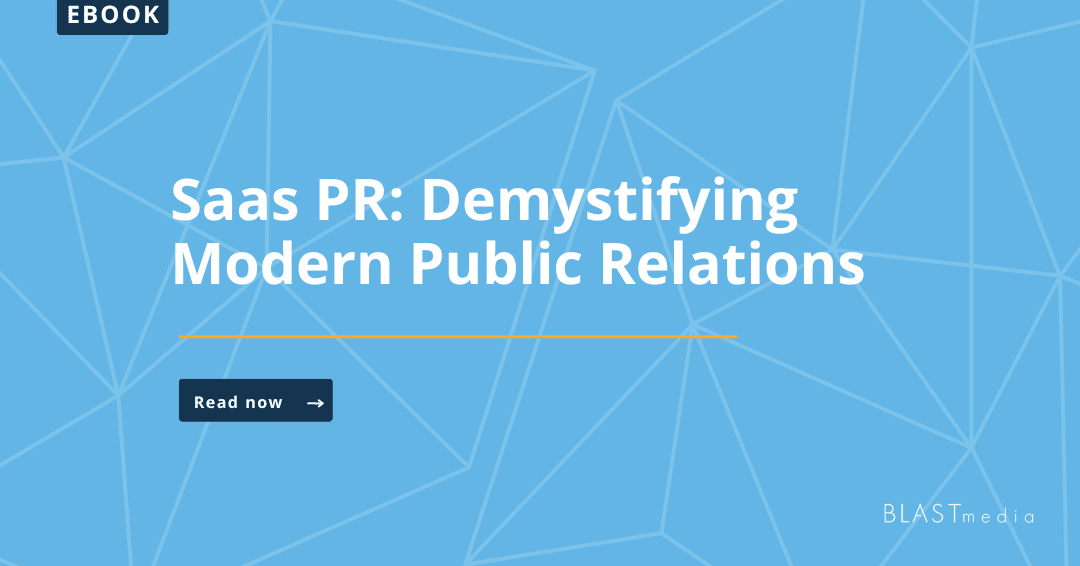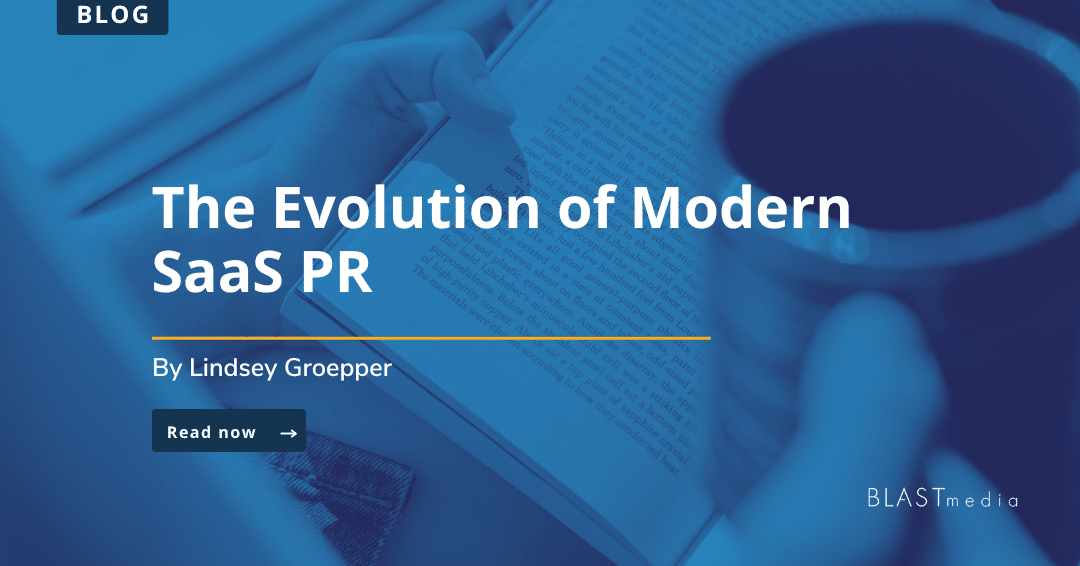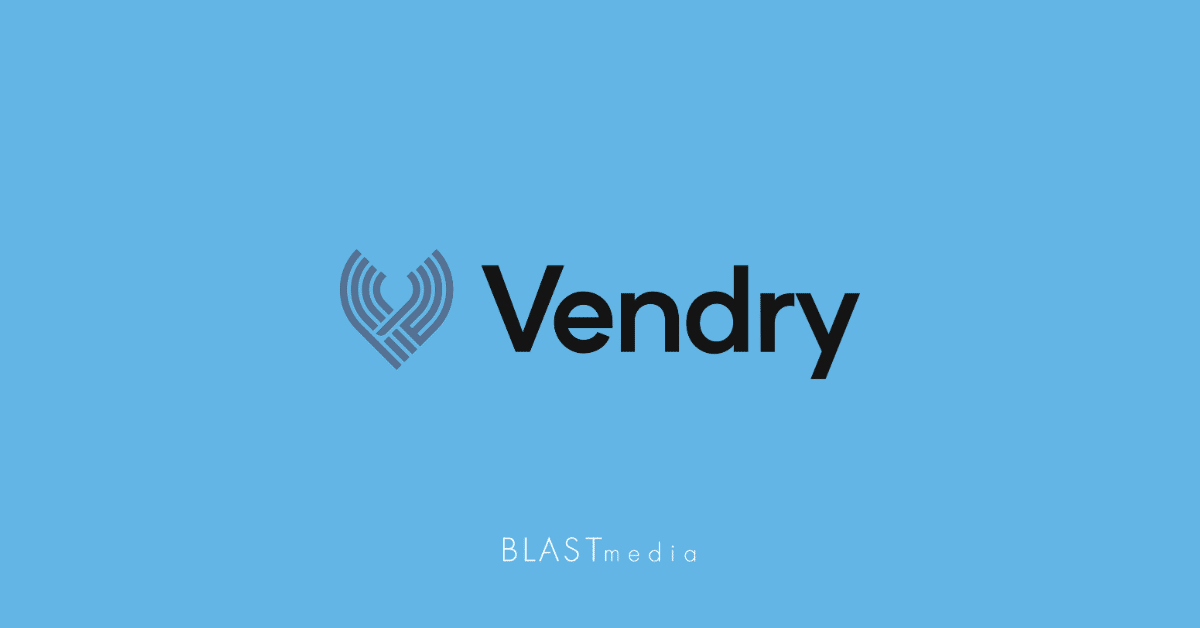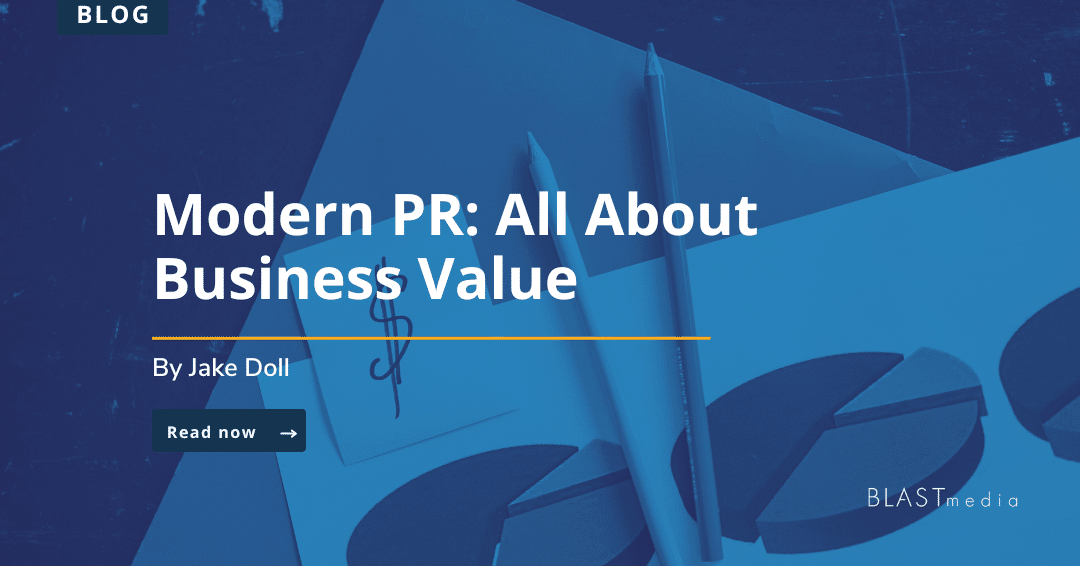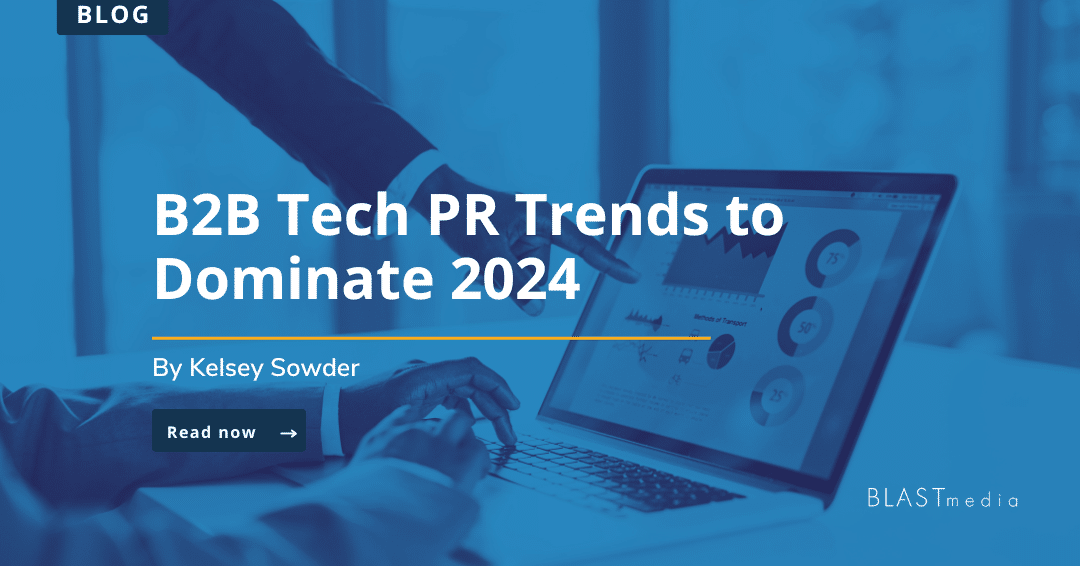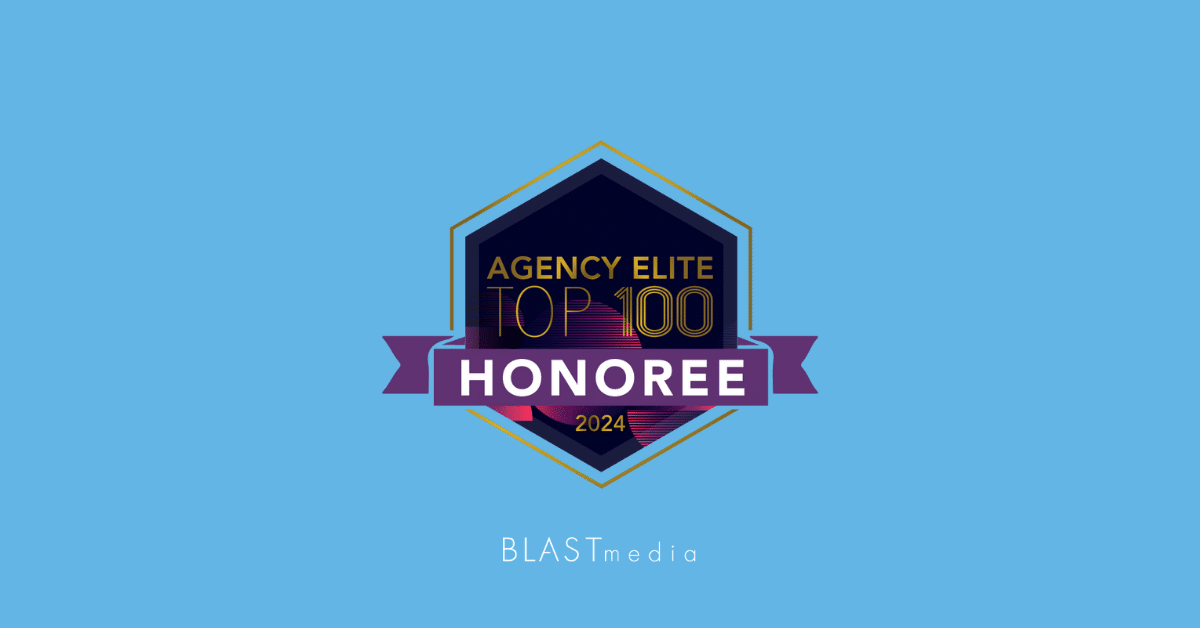Resource Topics: PR
The Evolution of Modern SaaS PR
We’re here to talk about modern PR. What is it? Well, it’s not so much modern, but evolved. The PR discipline, like other industries, had to level up to keep pace with tech innovation, ever-changing culture, and a media landscape that’s more unpredictable than than a reality show.
It’s still PR, but we’re not out here rebranding it like New Coke (remember that?). We don’t call our smartphones “modern phones” either, do we? They’ve gone from basic flip-phones to mini-computers with more power than the ones they sent to space in the ’60s. Yet, we just call them phones.
So, how has PR evolved? Let me break it down for ya.
PR has gone multi-channel.
Take The Wall Street Journal for example. It’s not just a newspaper anymore; it’s a whole digital extravaganza with podcasts, TikToks from editors, videos, and more. It’s like a digital octopus with tentacles reaching every corner of the internet and appealing to both super-broad and niche audiences alike.
Back in the day, PR pros pitched stories to newspapers, TV, and maybe radio. But now? There’s a bazillion blogs, podcasts, social feeds, communities, you name it, all clamoring for content. Brands are churning out their own stuff too, with influencers, social posts, and videos. It’s like a content tsunami, and PR teams are out here trying to surf it.
Analytics are a game-changer.
PR vanity metrics like impressions and ad equivalency are archaic and have been enhanced by measuring against clear objectives like Share of Voice, influence on organic search and web traffic (to name a few). We’ve gone digital from top to bottom, from strategies to results. It’s adapt or die in the digital world, and SaaS PR is no exception.
PR is no longer one-way communication.
It’s a dialogue. We’re building real relationships and engaging with our B2B SaaS client’s audience instead of just shouting into the media void. Audiences want to be heard, so we’re listening and using their feedback to shape our messaging and client narratives.
Authenticity is key in this age of fake news.
People want real stories and personalities, not overly-messaged corporate spiels about earnings and product features. Brands need to stand for something genuine to earn trust and connect with today’s millennial buyers. And a human-centered PR program can help achieve this.
Agility is essential in modern PR.
We’re moving at hyperspeed, jumping on opportunities and controversies before you can say “crisis management.” We’re out here shaping the conversation in real time, not stuck on the sidelines watching it unfold. When news breaks, there are new expectations from audiences around the speed of response and ability to address issues in near real-time.
The evolution of SaaS PR is undeniable. It has transformed into a dynamic and essential component of modern communication strategies. As we continue to witness the evolution of PR, one thing remains clear: its impact extends far beyond traditional media relations, shaping narratives, building relationships, and driving audiences to action.
Cheers to Season 5: BLASTmedia Kicks Off New SaaS Half Full Podcast Season with Inspiration for B2B SaaS Marketers
INDIANAPOLIS — Feb. 12, 2024 — BLASTmedia, the only PR agency dedicated to B2B SaaS, celebrates the launch of the SaaS Half Full podcast’s fifth season, hosted and bartended by BLASTmedia President Lindsey Groepper. SaaS Half Full is inspired by candid bar conversations after conferences and events, providing insights from SaaS marketers and others charged with growing a SaaS business.
The new season kicked off with positioning expert and author, April Dunford, on category creation and positioning; strategic brand builder and storyteller, Totango CMO Karen Budell, on marketing’s vital role in customer expansion; and martech and customer experience expert, Seismic CMO Paige O’Neill, on surviving a new CEO transition.
“From the very start, our vision for SaaS Half Full was to provide listeners candid access to some of the brightest minds in B2B SaaS marketing and growth. Since then, I’ve shared a drink with a line-up of incredibly inspiring SaaS marketers,” said Groepper. “I’ve had so many amazing conversations that give our listeners a peek into the minds of the industry’s biggest luminaries but stripped of the overly messaged and canned responses.”
Since its launch, SaaS Half Full has seen significant traction on top marketing and SaaS podcast lists and featured experts in SaaS marketing and growth, including former Drift VP of Revenue Marketing Justin Keller, former Atlassian Head of Brand Sarah Emmott, 15Five CMO Julia Stead, G2 Head of Marketing Palmer Houchins and more.
Listen to the SaaS Half Full podcast on all major listening platforms, including Apple Podcasts, Spotify, and Google Podcasts. For past episode archives and recaps, visit BLASTmedia.com.
About BLASTmedia
Established in 2005, BLASTmedia is the only PR agency in the US dedicated to B2B SaaS, representing companies from growth-stage to publicly traded. BLASTmedia understands the unique challenges associated with scaling a SaaS business and uses media coverage and thought leadership campaigns to impact four primary pillars: investors, employees, partners, and customers.

BLASTmedia Named Top PR Agency in 2024 by Vendry
INDIANAPOLIS — January 30, 2024 — BLASTmedia, the only PR agency dedicated to B2B SaaS, has been named to Vendry’s Top PR Agencies list for 2024. The list showcases agencies that blend traditional PR wisdom with digital-age tactics.
For more information about BLASTmedia and its services, please visit www.blastmedia.com/our-services.
About BLASTmedia
Established in 2005, BLASTmedia is the only PR agency in the US dedicated to B2B SaaS, representing companies from growth-stage to publicly traded. BLASTmedia understands the unique challenges associated with scaling a SaaS business and uses media coverage and thought leadership campaigns to impact four primary pillars: investors, employees, partners, and customers.
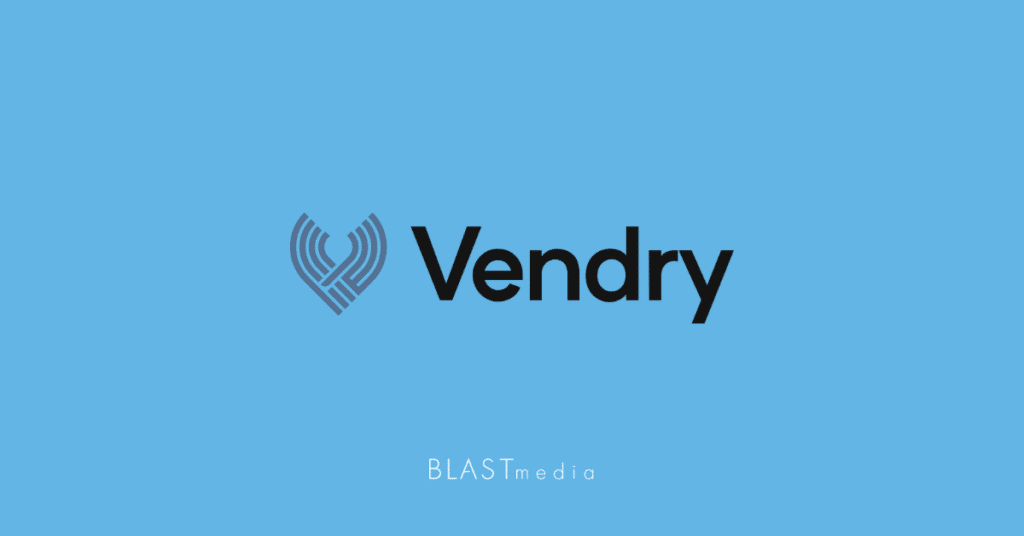
The Evolution of the Corporate Narrative

The corporate narrative no longer focuses solely on the CEO, category and product talk tracks. It’s broadened in topic and scope to act as another influencer on today’s generation of talent and buyers valuing purpose and connection.
And really, every company needs a narrative. We’re not talking about self-contained stories with a set beginning, middle and end, but rather an ongoing, open-ended tale focused on the customer — not the company.
Far too many companies struggle with crafting a compelling, inspiring corporate narrative that’s customer-focused. Successful companies have included Nike, with its “Just Do It” slogan, Google’s “Telling our Story” initiative, Zendesk’s “Let get real” story or Apple’s “Think different.”
In this post, we’ll talk about the merit of corporate narratives and how companies can expand their storytelling to reach more audiences, create customer loyalty, build resiliency and more.
A brief history
In the early 20th century, most large companies focused narrowly on selling products and services, and corporate messaging centered on product features, quality and customer service. By the mid-1900s, companies expanded their narratives to include related topics such as their history, relationships with communities, social responsibility efforts and value — a significant shift from the original product focus to building a broader identity and reputation.
More recently, companies have extended their narratives to include cultural branding, purpose-driven messaging, social causes and weightier topics like inequality and climate change.
Now, organizations seek to convey compelling stories across multiple channels — advertising, PR, social media, etc. — infusing those stories with personality, emotion and pillars that go beyond profits.
Benefits of telling more stories
So, why do stories matter? Have stories always been important, and we’ve only just taken notice over the past few years? Or have the audiences themselves changed?
There isn’t one single reason why stories have become more important. Still, the numbers show that Gen Y and millennials — who value purpose and meaning when choosing vendors — comprise most of today’s decision-makers.
Millennials expect something beyond the typical, traditional sales pitch. They crave meaning when selecting a vendor, and since millennials are involved in 73% of all B2B buying decisions, companies need to step it up to sate this craving. Brands must employ any strategy to attract those buyers, including creating a strong narrative beyond products and:
- Building an emotional connection.
- Inspiring evangelists.
- Driving culture.
- Guiding decisions.
- Cultivating trust.
- Sparking movement.
- Differentiating the brand from its competition.
Drive authenticity by involving the C-suite in narrative development and leveraging more “internal” SMEs — think CHROs, DEIB and ESG leaders — externally to add layers to the corporate narrative and its importance.
Sure, marketing can distribute the message, but leadership must immerse itself in customers’ needs and expectations. By understanding the full scope of potential opportunities, your leadership can author a narrative that truly resonates.
Once the C-suite is invested, invite employees to embrace and buy into it. Help them grasp the narrative’s significance, connecting it to their roles in enabling customer success. An inspired, unified workforce multiplies the narratives’ power. When each employee lives out a meaningful story, customers feel the impact.
Looking beyond products fuels inspiration. Delve into your customers’ needs, aspirations and ambitions. When their purpose resonates with your own, passion ignites. Let that intrinsic excitement guide you toward other paths for shared growth.
Then, empower meaningful action. Outline achievable steps to engage customers’ potential. The path to action should challenge — not overwhelm. Progress takes commitment; with care and courage, customers can act on the narrative to drive change.
Best practices for creating a corporate narrative
Corporate narratives have grown increasingly multidimensional and sophisticated, focusing on invoking something beyond a transactional relationship with target audiences. These expanded narratives help attract talent, connect with customers on a deeper level and portray the company as more than just a business.
But the narratives also invite more scrutiny if actions don’t fully match messaging or aren’t backed by meaningful policies and practices. Avoid serious missteps with these best practices.
- Articulate a clear purpose and values driving your organization beyond profits to build a solid and consistent foundation.
- Align the narrative with business goals and strategies to ensure you’re not simply sharing fluff.
- Get to know and understand your audiences so you can tailor your messaging and channels to resonate with target customers, stakeholders and communities.
- Showcase company culture authentically, with transparent glimpses into what’s really happening versus portraying more idealistic interpretations of the culture.
- Make corporate social responsibility (CSR) integral to your company, incorporating it into practices rather than treating it as merely an add-on or afterthought.
- Evolve and grow the narrative as your company and social expectations change.
- Substantiate the narrative and claims with action via concrete policies and measurable progress.
Not “The End” but rather a continuation
Investing in your brand is the most powerful intangible asset on your balance sheet. When you invest in expanding your corporate narrative to tell stories that your audience wants to hear, you foster customer loyalty, influence perceptions, drive advocacy, establish credibility, differentiate yourself from the competition, build a solid foundation in a changing world — and perhaps most important of all — create resilience.
Modern PR: All About Business Value
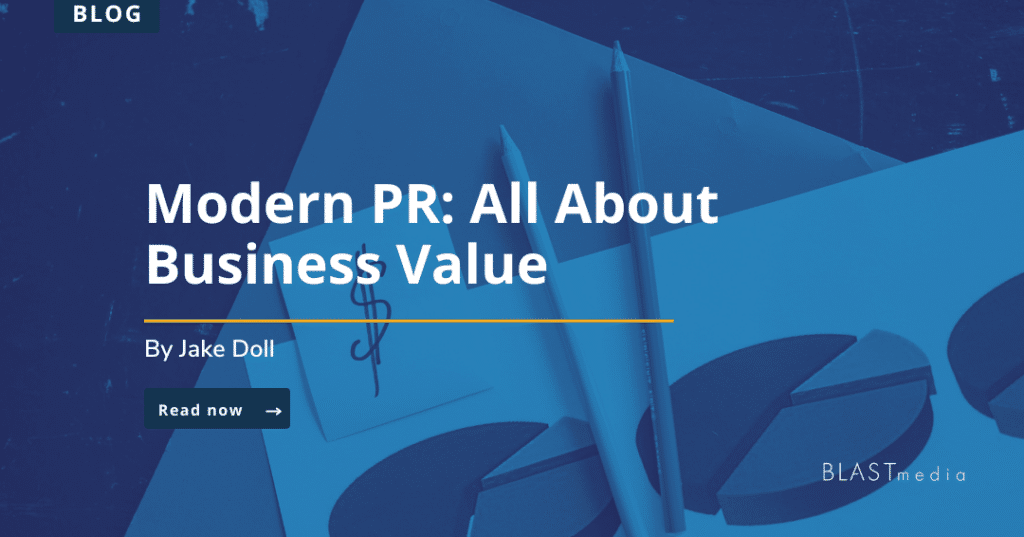
The PR industry has traditionally been a fan of big numbers. Hitting the 100+ pieces of coverage mark is exciting. Watching the likes and comments flow in on social media provides a dopamine rush. Metrics like advertising value equivalency (look, we’re in the millions!) or total potential reach (we’re in the billions!) can look great on a slide deck.
But, friends, the hard truth is that all of these KPIs or KRs — sheesh, we’re a fan of alternatives to “goals,” too — may not provide any real business value.
Is this the end of the industry? No, not at all. Do we have to evolve? Absolutely. Modern PR professionals must take a data-driven approach, tying their efforts to broader marketing objectives and demonstrating contribution to real business impact.
This post shows how traditional PR measurement limits PR and marketing teams and how the industry must shift to metrics that matter.
The Drawbacks of Traditional PR Measurement
Most PR teams report to marketing leadership, and according to MuckRack’s State of Marketing and PR Leadership, lead generation, the number of stories placed, sales, web traffic and conversion rates are the biggest priorities.
A simple, quick takeaway? Vanity metrics don’t cut it. Stakeholders want to see the measurable impact of PR, not just feel-good clips. Efforts need to sync with broader business goals to raise PR’s value. That requires moving beyond shallow reporting to prove links between PR programs and tangible marketing outcomes.
Using ABM to Demonstrate PR Impact
Let’s explore a concrete example of reorienting PR to business goals. A recent Terminus report reveals most marketers have an Account-based marketing (ABM) strategy, which relies on aligned cross-functional efforts across the most relevant and highest-value target accounts and contacts.
PR teams can support ABM by reviewing your target account list and decision-maker details to understand the businesses, roles and industry demands.
It can support sales penetration by spotlighting those accounts through earned media and relevant thought leadership. This captures decision-makers’ attention while associating the brand with strategic interests. It also provides valuable touchpoints for account reps to reference, facilitating meaningful engagement.
How does this look in action? A three-pronged effort could focus on:
Cornerstone content supporting lead generation
- Dynamic short-form video puts the company and experts front and center in our digital “town square.”
- Educational blog series provides content worth sharing
Customer elevation, supporting referral traffic
- Fresh and timely case studies give your best ambassadors the spotlight. This can be tough, but we outlined the customer PR process here!
- Strategic award nominations provide additional validation.
Sales support, supporting conversations
- Use our ABM list to incorporate key names in contributed content or podcast interviews, catching key targets’ attention.
- Drafting sales enablement emails to better equip your front line with the latest and greatest wins
The Bottom Line? PR Needs to Be Part of the Bottom Line.
The future of PR is integrating with broader marketing frameworks and goals to demonstrate real business contribution. Whether supporting an account-based sales pipeline or overall brand lift, PR must quantify impact through goal-aligned metrics rather than isolated vanity metrics.
By keeping measurement tied to targets the C-suite cares about, data-savvy PR teams make the function indispensable. Ready to modernize your PR program? Let’s chat.
B2B Tech PR Trends to Dominate 2024
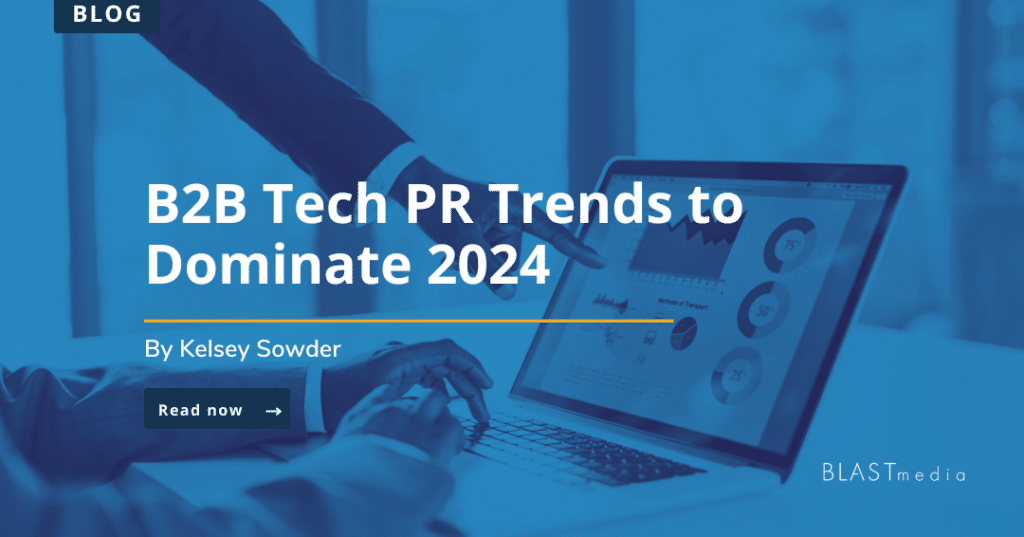
As 2023 wraps up, our team reflected on the significant events of this past year to forecast the top trends shaping tech PR strategies in 2024. From big moments like Silicon Valley Bank to Hamas attacking Israel to Open AI firing Sam Altman, the need for communicators in the decision room is clear. Here are our top predictions for tech brands gearing up for an unpredictable 2024 environment.
Non-traditional media outlets like Reddit, YouTube and podcasts will gain prominence for targeting developer and technical audiences rather than broader trade publications. Also, while AI may have dazzled as a buzzword, it will take more substantive narratives around problem-solving use cases rather than generic “innovation” to drive ongoing coverage. – Kate Johnson, VP of PR
Large analyst firms will face more hesitation from tech brands due to high costs and rigid frameworks that don’t always fit. Attention will shift to more specialized firms that provide flexibility, custom insights and impactful recommendations in a tight funding climate. – Jake Doll, VP of PR
With tightened funding, B2B SaaS PR strategy will pivot from product marketing to executive thought leadership. Owned assets will highlight innovations, while earning external media coverage builds credibility for company leaders to court crucial investor and employee audiences. – Kim Jefferson, EVP of PR
Per recent surveys, buyers rely more on LinkedIn to research vendors. Hence, B2B SaaS brands should invest more in ghostwritten, bylined content for executives to extend their industry voice and drive qualified traffic. – Zach Weismiller, VP of PR
And my own prediction…Industry watchers will shift from established analyst firms seen as “pay-to-play” to more impartial emerging influencers. For a transparent software selection process, customer review platforms like G2 that provide objective validation will only grow in value.
While the forecast for 2024 is more uncertain for PR pros, it also offers ample potential for brands willing to navigate this changing environment. As new influencers, platforms, and priorities emerge, the principles of conveying compelling and trustworthy narratives through engaged human connections remain.
For more 2024 predictions, check out 2024 SaaS PR Predictions: Navigating Data and Brand Trust.
2024 SaaS PR Predictions: Navigating Data and Brand Trust

From guiding communication around the war in Ukraine and the Silicon Valley Bank collapse to navigating the launch of Threads, 2023 was a big year for the PR industry. Throughout it all, our leadership team was involved in countless conversations to help guide our clients and team as we watched the industry — and world — evolve.
Here’s what several of our leaders predict for the industry in 2024 based on what they saw this year, from changes in how PR pros approach media relations to our tools taking new form.
PR will focus on the message over everything.
In 2024, PR professionals will shift their focus from the medium to the message. While securing media coverage for our clients remains a core responsibility, we must expand our horizons beyond traditional editorial publications. By crafting compelling narratives and aligning them with both owned and earned mediums — company blogs, LinkedIn posts, contributor profiles, and so on — we can orchestrate more impactful campaigns. This strategic approach will not only enhance the reach and resonance of our messaging but also establish our clients as industry thought leaders with the audiences that matter. – Kim Jefferson, EVP
Data pitching will need to evolve.
In the current data-saturated landscape, data alone no longer holds the power to captivate attention or establish industry authority. Data is now table stakes, and we must act like it when pitching it to the media. To ensure your data report escapes the cacophony of information overload and truly resonates with journalists, you must now look to data released in partnership with other brands, vendor-neutral reports and larger sample sizes to set your data apart. – Kelsey Sowder, VP of PR
Communications will move beyond awareness generation.
The role of communications has evolved beyond mere awareness generation. While securing prominent media placements remains valuable, the true power of communications lies in fostering brand trust. In a world brimming with skepticism, buyers are increasingly discerning, preferring to conduct their own research and rely on trusted sources for recommendations. Their decisions are guided by data, gut instincts, and the opinions of those they respect.
Amidst this shift, communications can serve as a bridge, enabling brands to establish themselves as credible sources of reliable information, insights and best practices. By consistently delivering valuable content, brands can cultivate affinity and loyalty among their target audience, ultimately translating into increased customer acquisition. Communications will take its rightful place as a strategic instrument for building trust and driving business growth in the year ahead. – Grace Williams, SVP of PR
X looks at an untimely demise.
The mass exodus of media and brands from X, once known as Twitter, is a troubling sign for the platform’s future. Companies are hesitant to invest in advertising on X because of concerns about reputational damage. The risk of impersonators tarnishing their brand image is simply too high. Moreover, a HubSpot report recently indicated that Twitter offers one of the lowest ROIs among social media platforms. Taken together, these factors suggest that X’s time may be drawing to a close as brands seek more secure and effective avenues for reaching their target audience. – Jake Doll, VP of PR
BLASTmedia Honored Within PRNEWS’ Agency Elite Top 100 for Second Consecutive Year
B2B SaaS PR agency spotlighted as one of the most innovative PR and communication firms in the world
INDIANAPOLIS — November 28, 2023 — BLASTmedia, the only PR agency dedicated to B2B SaaS, has been named to the Agency Elite Top 100 list by PRNEWS for the second consecutive year. The Agency Elite Top 100 is the most comprehensive guide of the top 100 most innovative PR, marketing and communications firms in the business.
“We not only want BLASTmedia to set the standard for SaaS PR, but for the PR and communications industry as a whole,” said BLASTmedia President Lindsey Groepper. “Being named to the Agency Elite Top 100 for the second consecutive year validates our team’s innovative thinking and tenacity to tackle the evolving communications landscape. We aren’t afraid to experiment or evolve a best practice — we embrace growing through change.”
According to PRNEWS, the list is designed to demonstrate the wide range of industry specializations and core capabilities that PR, marketing, and communications encompass, recognizing the top agencies across multiple segments and channels.
On top of the PRNEWS Agency Elite 100, BLASTmedia has been acknowledged as a leader in the industry through multiple recognitions over the last year, including being named a Leader on the first G2 grid for PR firms and receiving PR Daily’s Top Agencies award. The agency has also received recognition for its exceptional culture and employee experience, including being named one of Inc. Magazine’s Fastest Growing Private Companies for the second consecutive year, Inc. Magazine’s Best Workplaces for 2023, the Indiana Chamber of Commerce Best Places to Work list for the 8th consecutive year and nominated for the Mira Awards Exceptional Employer Award by TechPoint.
For more information about BLASTmedia and its services, please visit www.blastmedia.com/our-services.
About BLASTmedia
Established in 2005, BLASTmedia is the only PR agency in the US dedicated to B2B SaaS, representing companies from growth-stage to publicly traded. BLASTmedia understands the unique challenges associated with scaling a SaaS business and uses media coverage and thought leadership campaigns to impact four primary pillars: investors, employees, partners, and customers.
